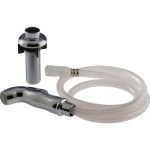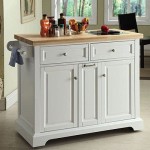Best Ways to Clean Kitchen Cabinets
Kitchen cabinets are a focal point in any kitchen, and they can easily accumulate dirt, grease, and grime over time. Regular cleaning is essential to maintain their appearance and hygiene. This article will provide a comprehensive guide on the best ways to clean kitchen cabinets, encompassing various cleaning methods and addressing common challenges.
1. Preparation and Gathering Supplies
Before embarking on the cleaning process, it's crucial to prepare the area and gather necessary supplies. Start by clearing out the cabinets, removing all contents to allow for thorough cleaning. Ensure adequate ventilation by opening windows or turning on fans. Gather the following supplies:
- Microfiber cloths
- Soft-bristled brush
- Warm water
- Dish soap
- Baking soda
- White vinegar
- Olive oil (optional)
- Rubber gloves (optional)
These supplies cater to various cleaning tasks, from removing stubborn stains to restoring the shine of the cabinets.
2. Cleaning Cabinet Surfaces
Once prepared, focus on cleaning the cabinet surfaces. Begin by wiping down the exterior and interior surfaces of the cabinets with a damp microfiber cloth. For greasy areas or stubborn stains, create a cleaning solution by mixing warm water with a few drops of dish soap. Apply this solution to a cloth and gently rub the affected areas. Alternatively, create a paste with baking soda and a small amount of water for more challenging stains. Apply the paste, let it sit for a few minutes, then gently scrub with a soft-bristled brush. Rinse the paste with a damp cloth and dry the surface thoroughly.
For cabinet doors and drawers, remove them to make cleaning easier. Clean the surfaces with the same methods as described above. Pay special attention to handles and knobs, which can accumulate dirt and bacteria. Use a toothbrush or Q-tip to reach small crevices and ensure thorough cleaning.
3. Cleaning Cabinet Interiors
Cleaning the interiors of the cabinets is equally important as it prevents the accumulation of dust, food particles, and other debris. Empty each cabinet, then use a damp cloth to wipe down the shelves, sides, and back of the cabinet. For more stubborn stains, use a combination of baking soda and vinegar. Sprinkle baking soda on the affected area, then spray with vinegar. Allow the mixture to fizz for a few minutes, then wipe clean with a damp cloth.
Pay close attention to corners and hard-to-reach areas, using a soft-bristled brush to dislodge any stubborn particles. Once cleaned, let the cabinets air dry completely before restocking them.
4. Finishing Touches and Maintenance
After cleaning, consider adding a finishing touch to your kitchen cabinets. Applying a thin layer of olive oil to wooden cabinets can help restore their shine and protect them from future damage. Simply apply a small amount of oil to a clean cloth and rub it onto the surfaces. Wipe off any excess oil with a clean cloth. For a more polished look, consider using a wood polish specifically designed for kitchen cabinets.
To maintain the cleanliness of your cabinets, consider creating a cleaning schedule. Aim to clean your cabinets at least once a month or as needed, depending on usage and the presence of spills. Remember to promptly address any spills or messes to prevent stains and maintain their pristine appearance.
5. Specific Cleaning Tips for Different Materials
The cleaning process for different cabinet materials might vary slightly. For example, wood cabinets require different cleaning techniques than laminate cabinets. Here are some specific tips for cleaning different cabinet materials:
- Wood Cabinets: Avoid using harsh chemicals or abrasive cleaners on wood cabinets. Use a mild dish soap and water solution or a wood cleaner specially formulated for kitchen cabinets. Always dry the surface thoroughly to prevent water damage.
- Laminate Cabinets: Laminate cabinets are generally more robust and can withstand harsher cleaners. You can use a general-purpose cleaner or a mixture of water and vinegar to clean them. Avoid using bleach or ammonia, as they can damage the laminate finish.
- Painted Cabinets: Painted cabinets require gentle cleaning to prevent stripping the paint. Use a mild soap and water solution or a cleaner specifically designed for painted surfaces. Test the cleaner on a small, inconspicuous area before applying it to the entire cabinet to ensure it doesn't damage the paint.
- Metal Cabinets: Metal cabinets are usually easy to clean. Use a mild soap and water solution or a metal cleaner specifically designed for kitchen cabinets. Avoid using abrasive cleaners or scouring pads, as they can scratch the metal surface.
By following these tips and cleaning methods, you can effectively maintain the cleanliness and appearance of your kitchen cabinets.

The Best Way To Clean Kitchen Cabinets

How To Clean Kitchen Cabinets The Maids

How To Clean Kitchen Cabinets 3 Best Bad Cleaners For Abbotts At Home

Best 4 Ways To Clean Greasy Kitchen Cabinets Rosene Cabinet Door And Custom Interior Doors In Toronto Gta On

Best Degreasers For Kitchen Cabinets Smart Remodeling Llc

3 Super Easy Ways To Clean White Kitchen Cabinets And Avoid

Best Steps To Clean Your Kitchen The Easy Way

What Is The Best Cleaner For Kitchen Cabinets

Spring Cleaning How To Clean Your Kitchen Cabinets

How To Clean Wood Kitchen Cabinets And The Best Cleaner For Job








